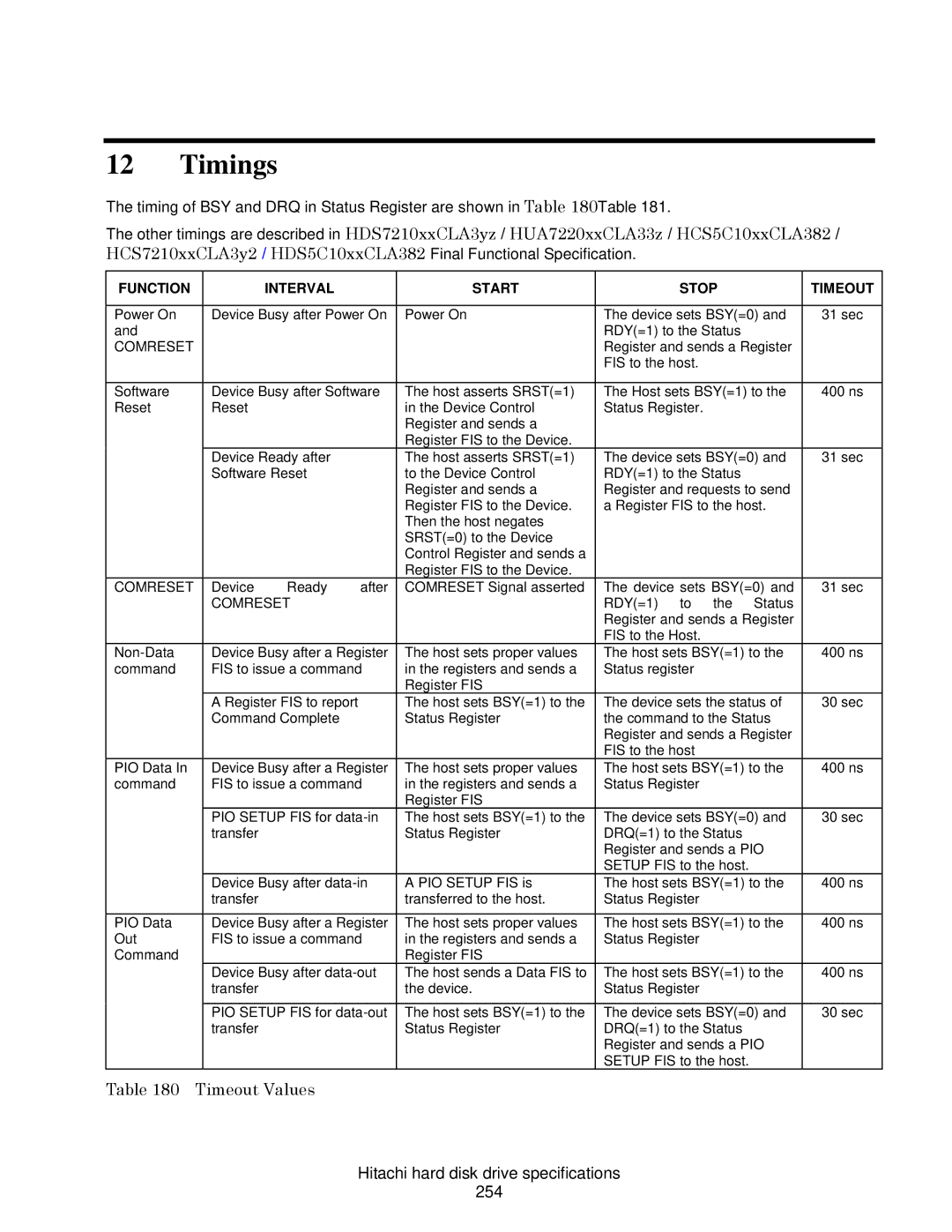HCS721016CLA382, HCS721050CLA382, HCS721025CLA382, HDP725050GLA360, HUA722050CLA330/1 specifications
Hitachi's lineup of hard disk drives, including models such as HDS721075CLA632, HDS721032CLA362, HDS721032CLA662, HDS721050CLA362, and DSDS7210C09EN-04, offers a variety of features catering to different storage needs. These drives are widely recognized for their reliability, performance, and efficiency, making them suitable for both consumer and enterprise applications.The HDS721075CLA632 model, with a capacity of 750GB, strikes a balance between performance and storage capabilities. It operates at 7200 RPM, ensuring quick access to data while maintaining low latency. Its 32MB cache enhances data transfer rates and improves overall system responsiveness. This HDD is particularly useful for gaming, multimedia, and office applications, allowing users to store a substantial amount of data with quick retrieval times.
The HDS721032CLA362 and HDS721032CLA662 share many similarities and are both designed for budget-conscious consumers. With a capacity of 320GB and a 7200 RPM, they offer efficient storage solutions for everyday tasks. The 32MB cache buffer enables efficient caching of frequently accessed files, providing a smooth experience for users.
Another notable model is the HDS721050CLA362, which features a capacity of 500GB. Like its counterparts, this drive operates at a speed of 7200 RPM and utilizes a 32MB cache, which ensures optimal performance for data-heavy applications. This model stands out for its energy efficiency, resulting in lower operational costs, making it an appealing choice for businesses and energy-conscious consumers alike.
On the other hand, the DSDS7210C09EN-04 is a part of Hitachi's enterprise-oriented offerings. This drive is engineered for demanding applications, featuring advanced technologies such as error recovery controls and enhanced data protection features. With a focus on reliability and performance, the DSDS7210C09EN-04 serves well in server environments and for high-performance computing.
Hitachi's hard drives incorporate various technologies that enhance their performance and durability. Features such as staggered start-up, which gradually powers on the drive, help minimize power surges and increase the longevity of the device. Moreover, Hitachi's commitment to quality ensures that each drive undergoes rigorous testing, guaranteeing functionality and reliability.
Overall, the diverse range of models from Hitachi provides effective solutions for anyone from casual users to enterprises, combining storage capacity with advanced technologies to meet the evolving demands of modern data storage.
